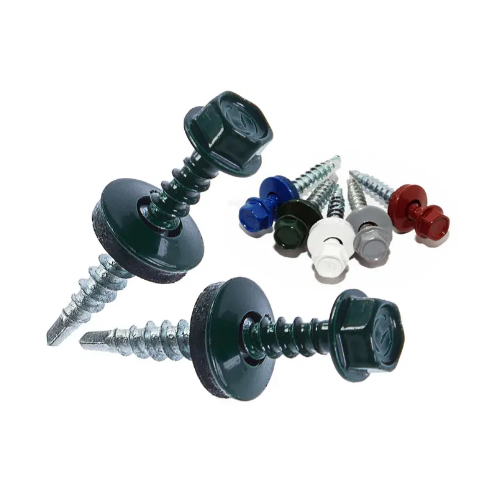lock washer flat washer placement manufacturers
Understanding Lock Washers and Flat Washers Placement and Manufacturing
When it comes to mechanical assembly and fastening, the importance of washers cannot be overstated. Two primary types of washers used in industrial applications are lock washers and flat washers. Each serves a distinct purpose and understanding their placement and manufacturing can significantly enhance the efficiency and durability of assembled components.
Lock Washers
Lock washers are designed to prevent the loosening of fasteners due to vibrations and dynamic loads. They come in various shapes, including split, toothed, and wave designs. The split lock washer, for example, has a split that creates a spring-like action, which exerts pressure against the fastener and the assembly's surface. This pressure helps maintain tension and resist rotation, ensuring that the connection remains secure even under challenging conditions.
In terms of placement, lock washers are typically installed beneath the fastening element, such as a bolt or nut. It is crucial to ensure that the lock washer is positioned correctly, as improper placement can lead to reduced effectiveness. For instance, if a lock washer is not fully seated against the surface, it may not provide the required resistance to vibrational loosening.
Flat Washers
lock washer flat washer placement manufacturers

Flat washers, on the other hand, are primarily used to distribute the load of a fastener and prevent damage to the surface of the material being fastened. They come in a variety of sizes and materials, depending on the application requirements. Flat washers are most commonly placed between the fastener head or nut and the surface being fastened.
The adequate placement of flat washers is essential to ensure an even distribution of load, which can help in maintaining the integrity and lifespan of the assembly. Without flat washers, a fastener could cause localized deformation, leading to premature failure of the components.
Manufacturing Considerations
The production of both lock washers and flat washers is a critical factor in their performance. High-quality manufacturers utilize advanced materials, such as steel, stainless steel, and various metals, to produce washers that can withstand specific conditions, including corrosion, heat, and mechanical stress.
Precision cutting and forming techniques are employed to ensure that each washer meets stringent dimensional tolerances. This precision is fundamental not only for the proper fit but also for the functionality of the washers. Additionally, many manufacturers offer customized solutions to meet the unique requirements of different industries.
In conclusion, both lock washers and flat washers are essential components in mechanical assemblies. Their specific placement and the quality of their manufacturing significantly influence the performance and reliability of fastened joints. When selecting washers, it is critical to consider their intended use, as well as the materials and manufacturing processes involved, to ensure optimal performance in any application.
-
Top Choices for Plasterboard FixingNewsDec.26,2024
-
The Versatility of Specialty WashersNewsDec.26,2024
-
Secure Your ProjectsNewsDec.26,2024
-
Essential Screws for Chipboard Flooring ProjectsNewsDec.26,2024
-
Choosing the Right Drywall ScrewsNewsDec.26,2024
-
Black Phosphate Screws for Superior PerformanceNewsDec.26,2024
-
The Versatile Choice of Nylon Flat Washers for Your NeedsNewsDec.18,2024










